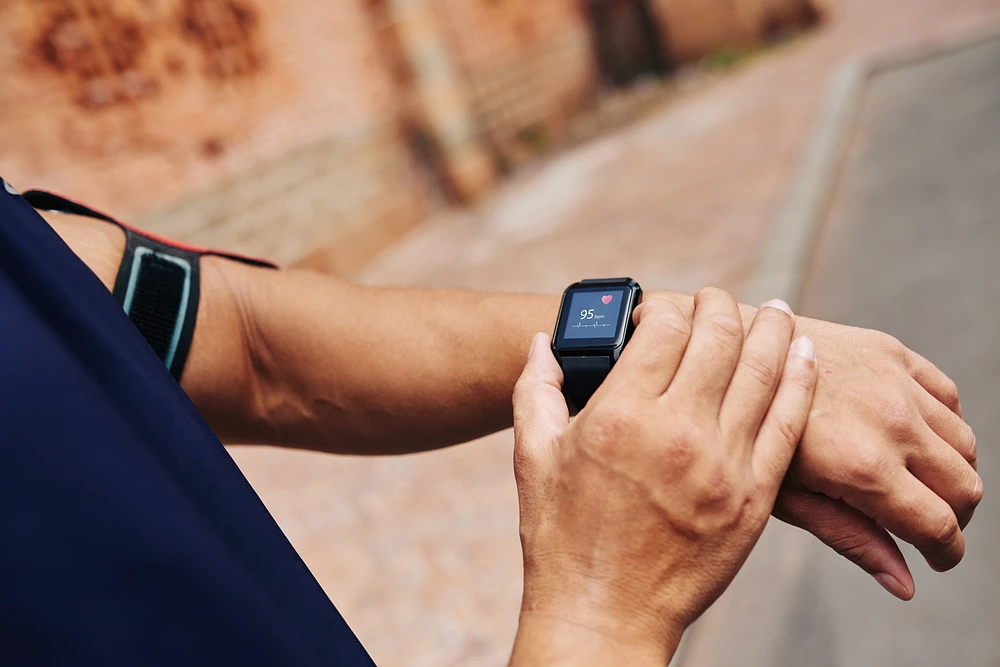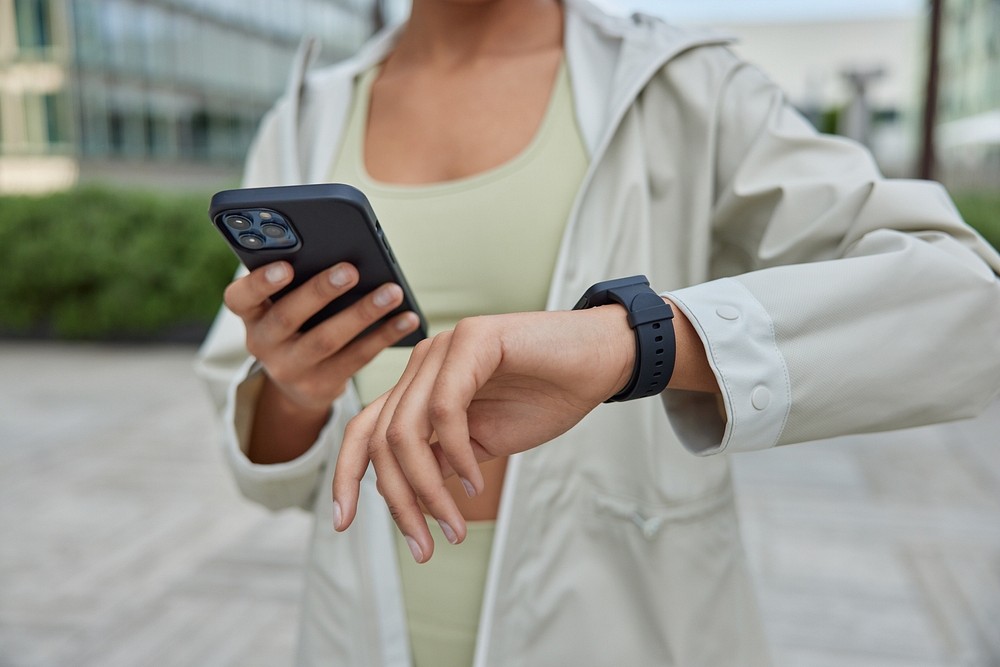TL;DR
- Walking burns calories effectively while being gentle on joints, making it perfect for sustainable weight loss
- Step tracking devices provide motivation through goal-setting and progress monitoring
- Under-desk walking pads let you accumulate steps during work hours without leaving your office
- Modern fitness trackers offer comprehensive health data and social features to keep you motivated
- Simple pedometers deliver unmatched accuracy for pure step counting at affordable prices
- Why Walking is a Secret Weapon for Weight Loss
Walking seems simple, doesn't it? But numbers show something else. A 30-minute walk can burn between 100 and 260 calories. Your own weight and walking speed decide the final count. Running can be tough on joints, while walking is much gentler. That makes it an easy habit to keep up for a long time, open to almost everyone.
Good effects go well beyond burning calories. A regular walking habit can cut your risk of heart disease, Type 2 diabetes, and stroke. It also tells your body to release endorphins. This change in brain chemistry helps reduce stress and improve mood. It directly addresses some common reasons for emotional eating.
Evidence is clear. Best part about walking for weight is that there are no real obstacles. You don't need special equipment, a gym membership, or perfect weather. You can simply start.
How Tracking Steps Fuels Motivation and Results
Step counting works well because it connects to a simple human instinct: we improve what we measure. Seeing a number on your phone or watch makes a goal feel real. It stops being an abstract idea about moving more. Instead, it becomes a concrete target, creating gentle but useful personal pressure.
That well-known goal of 10,000 steps isn't a magic number. Research suggests a better spot for health benefits is around 7,000 to 8,000 steps. The 10,000 mark is more helpful for managing weight. But the most important finding is this: any increase from your usual routine helps. What counts is beating your own average.
This whole process builds momentum. You might take a few extra steps to reach a target, and that action reinforces the behavior. Over time, that conscious effort turns into a new normal. Moving more just becomes a habit you don't have to think about.
The Under-Desk Walking Pad – Walk While You Work

Walking pads represent a revolutionary approach to combating sedentary lifestyles. These compact treadmills fit perfectly under standing desks, allowing you to walk while working, watching TV, or taking calls.
Key specifications:
- Maximum speed: 3-4 mph (perfect for brisk walking)
- Weight: 30-50 pounds (easily movable)
- Design: Often foldable for storage
- Noise level: Whisper-quiet operation
Advantages:
- Transforms dead time into active time
- Improves circulation during long work sessions
- Increases daily step count effortlessly
- Weather-independent exercise option
Drawbacks:
- Limited to walking speeds only
- Requires standing desk setup
- May not provide intense cardio workout
- Initial investment cost
Walking pads excel for desk workers who struggle to find time for exercise. You can easily accumulate 3,000-5,000 extra steps during a typical workday without disrupting your schedule. The gentle movement also helps maintain focus and energy levels throughout the day.
The Modern Fitness Tracker – Your Wrist-Based Coach

Fitness trackers like the Fitbit Charge 6 have revolutionized how we monitor daily activity. These wrist-worn devices use advanced accelerometers to track steps, distance, calories burned, and heart rate continuously.
Key specifications:
- 24/7 step and activity tracking
- Heart rate monitoring
- Sleep pattern analysis
- GPS connectivity via smartphone
- Battery life: 5-7 days
Advantages:
- Comprehensive health data collection
- Motivational apps with achievement badges
- Social features for friendly competition
- Smartphone notifications and reminders
Drawbacks:
- Can miscount non-walking arm movements
- Requires regular charging
- Learning curve for advanced features
- Subscription costs for premium features
Modern fitness trackers shine for tech-savvy users who want detailed insights into their health patterns. The social aspects - like challenging friends or joining virtual walking groups - provide powerful motivation to increase step count consistently.
The Dedicated Pedometer – Simple and Accurate

Traditional pedometers like the Omron HJ-325 Alvita Ultimate focus solely on step counting with exceptional accuracy. These clip-on devices use mechanical or digital sensors to detect the up-and-down motion of walking.
Key specifications:
- Step counting accuracy: ±5% error rate
- Simple digital display
- Long battery life (months or years)
- Compact, lightweight design
- No smartphone required
Advantages:
- Unmatched accuracy for pure step counting
- No learning curve or setup required
- Extremely affordable
- Won't distract with notifications
Drawbacks:
- Limited to basic step counting only
- Easy to lose or forget
- No advanced health metrics
- Lacks motivational features
Dedicated pedometers work best for users who want accurate step counts without distractions. They're perfect for older adults or anyone who prefers simplicity over advanced features.
Conclusion: Your Next Step to a Healthier You
Forget the gym hype; walking is a legit tool for weight loss. The trick isn't complexity. It's turning a simple activity into a consistent habit. A tracking device bridges that gap.
Choice of tool shows your style. A basic pedometer is simple. It just counts steps. Fitness trackers go further, showing reasons behind your activity. They spot patterns in heart rate and sleep. Under-desk treadmills are for someone who likes to multitask. What connects them isn't the technology, but the useful feedback you get. Real progress isn't a big, sudden change. It's the daily grind of pushing that average up, little by little.
The best device is the one you'll actually use. Find it, put on your shoes, and go. The feedback you get provides a tangible push that willpower alone often lacks.
Comparison Table: Choosing the Right Device for You
|
Feature |
Walking Pad |
Fitness Tracker |
Pedometer |
|
Primary Function |
Indoor walking |
Comprehensive tracking |
Step counting |
|
Best For |
Desk workers |
Tech enthusiasts |
Simplicity seekers |
|
Accuracy |
Perfect for steps taken |
Good for daily tracking |
Excellent for steps |
|
Price Range |
$200-500 |
$100-300 |
$15-50 |
|
Key Benefit |
Multitasking exercise |
Detailed health data |
Pure accuracy |
FAQ: Your Questions About Walking for Weight Loss, Answered
How many steps a day do I need to take to lose weight?
That famous 10,000-step target was actually a marketing stunt for a pedometer. Truth is, you just need to move more than you usually do. Adding even 2,000 or 3,000 steps to your day helps. Science suggests a sweet spot for health benefits is maybe 7,000 to 8,000 steps. But the most important part is consistency. Walking 6,000 steps daily is much better than taking one long 12,000-step walk.
Is a walking pad as effective as walking outside?
On a walking pad, you can certainly get your steps in and burn calories. It’s great for avoiding excuses like poor weather. But walking outside does offer more. Uneven ground, wind, and small hills work more muscles, which can mean a better workout.
Can I really lose weight just by walking?
Yes, walking alone can help with weight loss. It’s not just a simple activity. It boosts your NEAT, a big part of how many calories you burn all day. Just remember, diet is key. You can’t walk enough to make up for poor eating habits.
Are fitness trackers and phone pedometers accurate?
Fitness trackers and phone pedometers are generally decent at counting steps during a steady walk. Where you wear the device matters, though. A clip-on hip unit usually trumps a smartwatch, which can fudge the numbers by registering minor hand movements—like typing or gesturing—as steps.
What is a good walking speed for weight loss?
A good speed for weight loss is a brisk pace. Use the “talk test”: you should be able to hold a conversation, but singing would be difficult. This usually means walking 3 to 4 miles per hour. This pace gets your heart rate into a zone that burns fat, but not so hard that you get tired too fast.
























